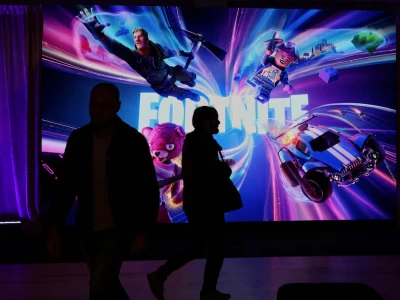
LinkedIn ages like fine wine in Microsoft’s cellar
Those market dynamics have buoyed LinkedIn, which was only generating $3 billion in revenue when Microsoft bought it.
NEW YORK, June 28 (Reuters Breakingviews) - Most corporate acquisitions deteriorate over time, but Microsoft’s $26 billion deal for LinkedIn keeps getting better. Although the original vision of a universal and complete professional profile has yet to be realized, connecting business networking with Outlook and other workplace software is proving to be fruitful nevertheless. And in the emerging age of generative artificial intelligence, the verifiable identities of adult users, and their musings, will only amplify the value.
There were good reasons to be skeptical about the transaction at the time. Buying LinkedIn was a bold step for Satya Nadella, who became the software goliath’s third chief executive in early 2014. Under his predecessor, Steve Ballmer, the company’s track record in M&A was terrible, including value-destructive acquisitions of Finnish cellphone maker Nokia and advertising agency aQuantive. Paying a 50% premium for LinkedIn and its 430 million users made it one of the technology industry’s largest deals ever and by far Microsoft’s biggest. The record will stand unless regulators reverse their opposition to last year’s $69 billion agreed takeover of video-game developer Activision Blizzard or courts back it.
The war over the “Call of Duty” maker is just one of many things happening at Microsoft that’s overshadowing LinkedIn. There’s also the fast growth in the Azure and other cloud services divisions and sustained revenue increases in the Office 365 and Windows commercial segments as well as in servers. ChatGPT, the company's AI initiative, is also creating outsized buzz.
Under all that cover, LinkedIn is benefiting from parallel trends. TikTok has chipped away at social networks targeting younger audiences while closer LinkedIn rivals have struggled. User growth has slowed, for example, at Facebook parent Meta Platforms, and revenue declined last year. The company controlled and led by Mark Zuckerberg also is distracted by the multiple trustbusters and other regulators aggressively targeting it.
In the meantime, Twitter, which Tesla boss Elon Musk bought in October for $44 billion, has lost advertisers, partly because of its toxicity. LinkedIn, meanwhile, is humming along. Top-line growth has been 43% a year, on average, since 2017, and reached $14 billion last year thanks to employers looking to hire and premium subscribers.
Those market dynamics have buoyed LinkedIn, which was only generating $3 billion in revenue when Microsoft bought it. The Meta enterprise trades at about 5 times 2022 sales. On that multiple, LinkedIn’s implied value has nearly tripled to $70 billion. It’s a conservative estimate, too, considering the relative trajectories of the two companies. Meta’s stock price had increased nearly 300% from the time Microsoft unveiled its plan to buy LinkedIn through September 2021, but has slumped by more than a quarter since that peak.
LinkedIn’s target demographic augurs well for tomorrow, too. The overwhelming majority of its 930 million users are 30-to-39-year-olds, according to consultancy Sprout Social, versus the 18-to-24-year-olds who prefer TikTok and Instagram. LinkedIn isn’t faddish either, meaning jobseekers and other scrollers are less likely to be anonymous.
These users are a handy constituency for Bing, Microsoft’s chatbot, which constantly updates its code to respond in a more human-like way. Earlier this month, LinkedIn also rolled out a generative AI tool that helps customers write their advertising copy for the network, as part of a broader expansion effort that also includes the ability to deliver video ads to users streaming movies and TV shows.
It’s probably only a taste of what’s to come. LinkedIn could leverage AI to help jobseekers and hirers cut out recruitment intermediaries, for example. Such advances might further add to the division’s growing significance; it accounted for almost 7% of Microsoft’s revenue in the year ended June 30, 2022, up from only a little more than 2% when it was first bought. So long as the professional network’s data is free to its $2.5 trillion parent company, and useful, it will be positioned to keep improving. Nadella’s recent decision to invest billions of dollars in ChatGPT-maker OpenAI should help his maturing LinkedIn deal age even better.




